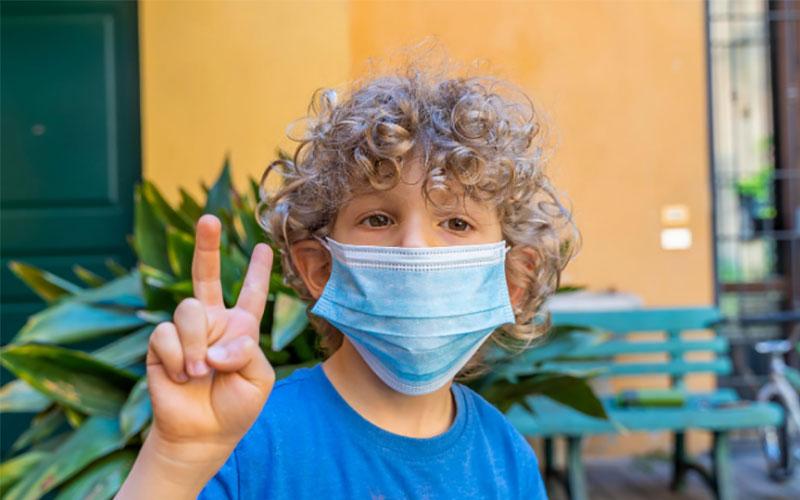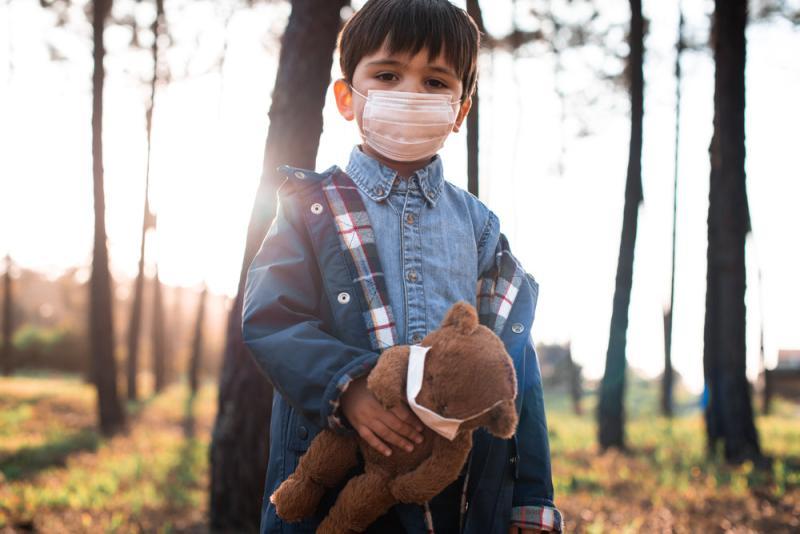Supporting your child's transition back to school during the COVID-19 pandemic
Our expert this week is Lorraine Breffni, Ed.D., Executive Director of Early Childhood at Nova Southeastern University’s University School Mailman Segal Center. She provides parents with practical advice for helping prepare children to return to school–whether virtual or in-person–during the COVID-19 pandemic.
At a Glance
The first weeks of school are times of anticipation and excitement. Classroom communities form and children get to know each other. Returning to school this year, however, may not feel like normal – at least for a while. Children have spent many long months apart from their peers and their teachers. Whether school is remote or in-person, children will need time to adjust to the routines they were previously very familiar with. However, not all is lost. A little preparation can go a long way. With some careful, proactive planning, you can help your child transition back to school.

Tips for a Successful Transition
Here are some ideas to help things run smoothly:
- Get reacquainted with family routines that may have drifted. Children thrive on routine, so in the weeks before online or in-person school, try to return to those pre-COVID mealtime and sleep schedules.
- Practice ‘getting ready for school’ procedures. If leaving home, wash hands, take a temperature check, and, if necessary, wear a face covering. Try not to leave learning these important health procedures to the first day.
- Involve young children in return to school activities. Invite them to help with lunch or snack preparations, or take them to the store and allow them to choose a new lunch bag.
- Answer questions your child may have about the health and safety protocols in place at school and in the broader community. The following books can provide developmentally appropriate opportunities to talk about our new normal with young children:
- Smiling From Ear to Ear: Wearing Masks While Having Fun by Kaitlyn Chu. Have you ever seen an elephant wearing a mask? This book helps address children’s fears about face coverings by explaining why they are important and how they can keep us safe.
- Lucy’s Mask by Lisa Sirkis Thompson. Lucy thinks masks are so much fun that she likes to wear them all the time. As well as describing Lucy’s antics, this book sparks discussion about germs, viruses, and what we can do to keep each other safe.
- The Social Distance King by Eric DeSio. Did you know that even kings and queens must follow physical distancing rules? This book delicately introduces the theme of physical distancing and explores what it might mean to young children.
- Germs, Yuk by Sky Davis. What does a microbe looks like under a microscope? This helpful book teaches children about germs and how the simple practice of washing hands can keep them away.

Know Your Child’s Response to Change
While these activities can help most children prepare for the new school year, it is essential that you understand and are responsive to your child’s reaction to change. Yes, some children may pick up where they left off and walk into school or return to remote learning without a backward glance. Other children – especially those between 18 months and 3 years – may find adjustment or separation difficult. Be prepared for this. During drop off for in-person schooling, do not be alarmed if your child cries, is upset, or is resistant to leaving you. Provide reassurance that it is okay to have mixed emotions about returning to school. She will get to see her friends again or make new friends. Let your child know you will be back to pick her up later and say goodbye with confidence.

Connect with Your Child’s School
Remember too that you are not in this alone. Reach out to the school and ask them to share what they will be doing to support your child’s transition back to their remote or in-person classroom. For example, are they offering developmentally appropriate opportunities for children to connect, talk about, share, or express their feelings about the pandemic? Will they provide additional time to teach, practice and model behavioral expectations that meet the individuals needs of children as they return to the more structured environment of school?
Look After You
Finally, with all the focus on your child’s transition back to online or in-person school, don’t forget to take a moment to look after yourself. Practice self-care, recognize your feelings, and be kind to yourself. Share the burden of family care with others if possible. When you are well, both physically and emotionally, you are better placed to manage the inevitable highs and lows that this pandemic has burdened us with. While it may not feel like it now, the lessons learned and the investments made will, hopefully, help make your family more resilient over the long term.
About the Author

Lorraine Breffni, Ed.D., is the Executive Director of Early Childhood at Nova Southeastern University’s University School Mailman Segal Center. She has published extensively, including journal articles, peer-reviewed research studies, and academic textbooks. She advocates for the needs of young children and their families by serving on national and local boards.